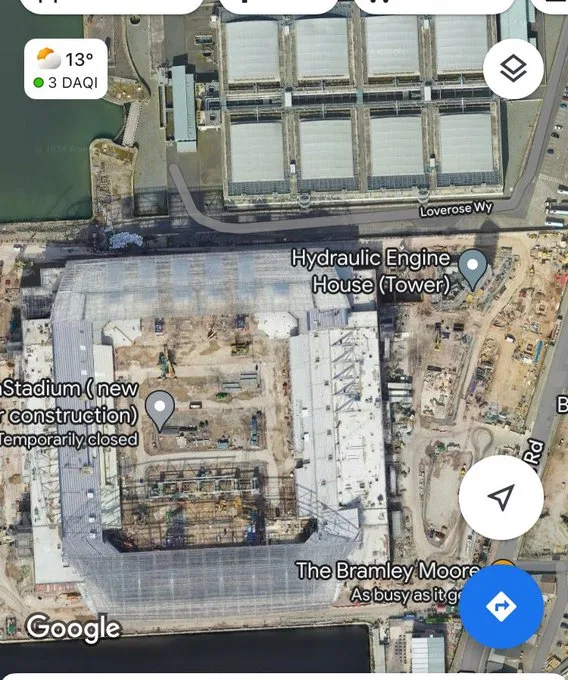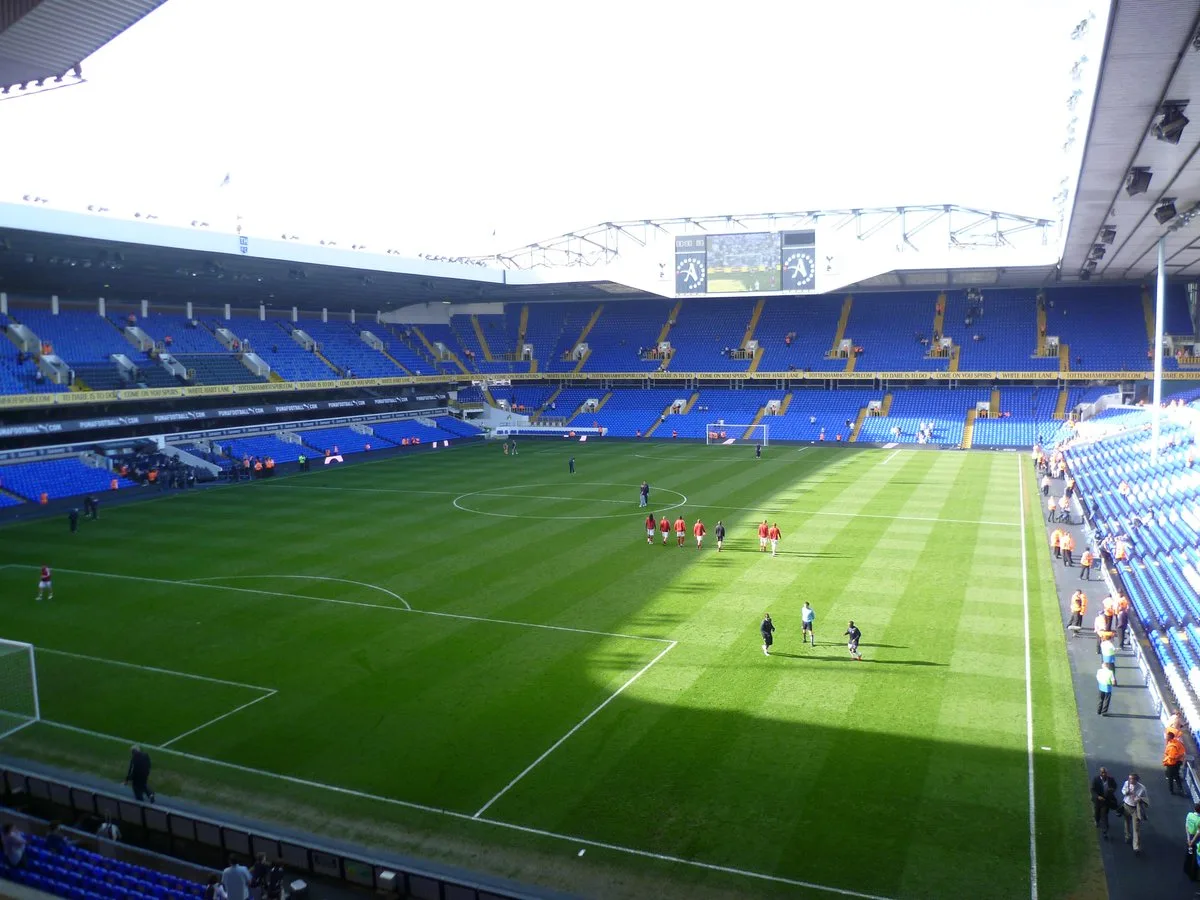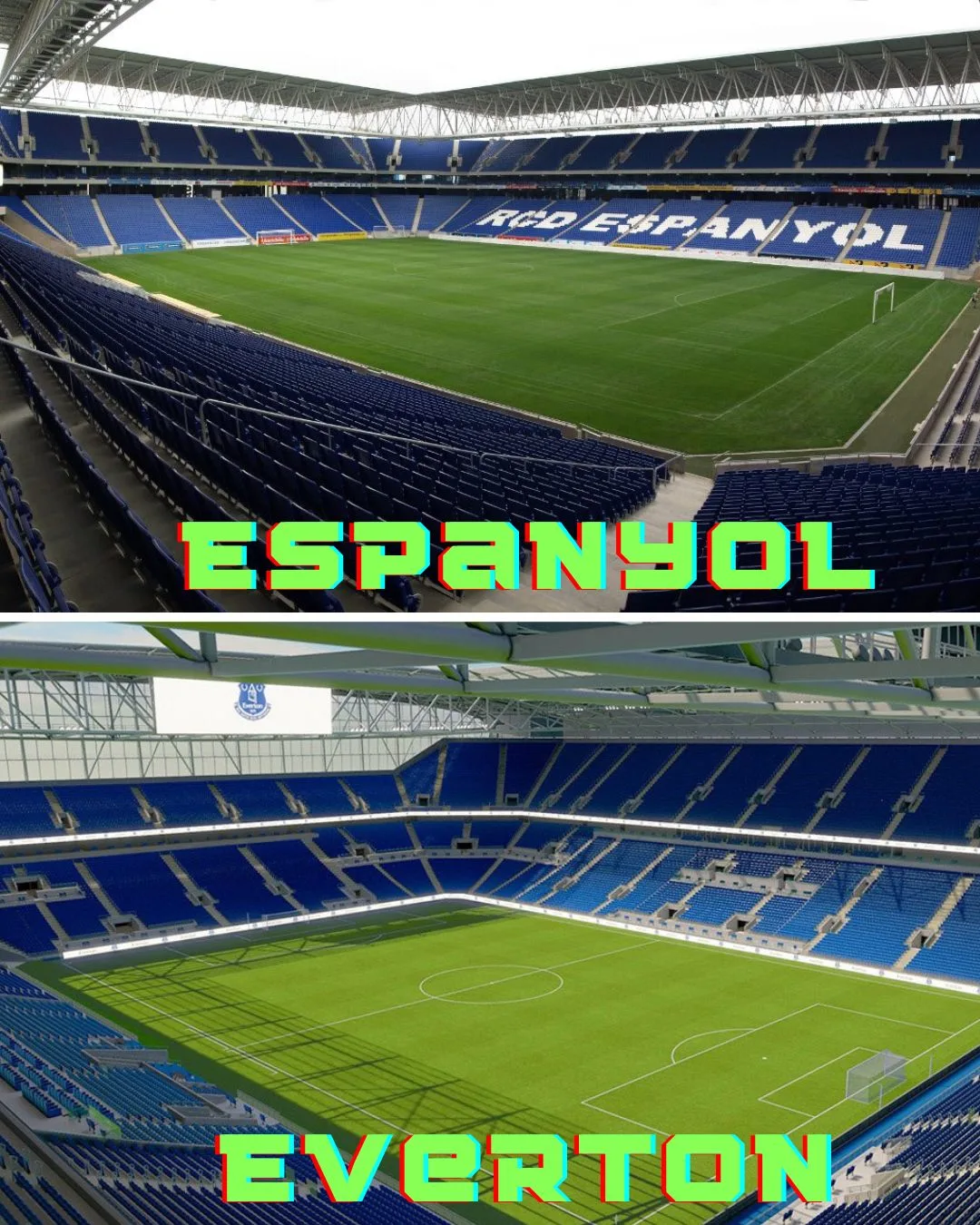Everton has had a nightmare of a Premier League season so far. Two charges for breaking the Premier League’s Profitability and Sustainability rules have handed them a 10-point penalty this season.
As a result, The Toffees, who had a promising start to the season, now have to fight it out against time to avoid ending up in the relegation zone. To make matters worse for the supporters, this might be the last couple of years at Goodison Park for the men in blue, and they really can’t afford to end their tenure on a low.
Reports indicate that Everton is on the brink of relocating to their new stadium. The Everton Stadium, currently under construction at Bramley-Moore Dock in Vauxhall, Liverpool, England, is set to become the new home ground for Everton F.C. ahead of the 2025/26 season.
This decision was deliberated upon in a meeting with the Fan Advisory Board and subsequently confirmed in a blog post by Everton’s interim CEO and Chief Stadium Development Officer, Colin Chong, released last Friday with the construction scheduled to be completed by the end of 2024.
“Everton Stadium remains firmly on track, as scheduled, to be completed in the final weeks of 2024,” said Colin Chong.
Everton obtained planning permission from Liverpool City Council in February 2020 for the new stadium, with work commencing officially in August 2021 on the £500m project. Recently, several snapshots of the under-construction structure of the stadium emerged on the internet. The new stadium needs to be stress-tested to obtain a Safety Certificate from the council, and Chong added that fans will have a chance to “see and sample the new facilities” at these test events. However, if reactions to the photos are any indication, it seems that people are not entirely convinced by the project.
The New Everton Stadium
It’s intriguing to note that Everton’s journey before Goodison Park began at Anfield. That said, this upcoming move to the new stadium at Bramley-Moore Dock will mark the first time Everton has relocated grounds since 1892 when they departed Anfield following a bitter and protracted dispute with their own chairman, John Houlding.
Since then, Goodison Park has stood as the cherished home of the Toffees and a testament to many memories. Over the years, it has undergone gradual updates and renovations, both cosmetic and functional, with a significant development occurring in August 1994 with the opening of a new stand, which significantly increased its seating capacity to approximately 39,000.
However, the experience at the stadium became stale when concerns arose regarding the comfort and facilities within the ground, particularly the lack of corporate amenities. In 2007, then-CEO Keith Wyness disclosed that the club had invested £500,000 in repairs solely to maintain the steelwork of the ground up to standard. Additionally, there were serious apprehensions that within a couple of years, it might fail safety inspections. Furthermore, there was little-to-no room for expansion at Goodison Park itself due to the ground being sandwiched between terraced housing in the city. Moreover, Everton takes home less money from their corporate facilities than any other club in the Premier League, something which the owners of Everton are desperate to change.
Consequently, at the Annual General Meeting in January 2017, chairman Bill Kenwright disclosed that Bramley-Moore Dock had been identified as the favored site for the new stadium. Everton’s upcoming stadium will be positioned just over two miles away from Goodison Park, nestled along the banks of the River Mersey.

Designed by MEIS Architects and Pattern Architects, the Everton Stadium—officially named as such initially—is being constructed by Dartford-based construction company Laing O’Rourke. The projected cost for the stadium stands at approximately £500 million.
Reportedly, the Everton stadium will feature a bowl design crafted from steel and glass, complemented by a brick base that pays tribute to the iconic Archibald Leitch latticework of Goodison Park. Initially, the stadium is proposed to have a capacity of 52,888 blue seats, with a north-south orientation designed to facilitate efficient crowd circulation. However, there is potential for this capacity to be expanded to 62,000 in the future.
The east and north stands of the Everton stadium will feature two main tiers, while the south end will have a steep incline. To accommodate the stadium, the existing dock will be filled with reclaimed sand from the River Mersey, positioning the stadium right at the water’s edge. Additionally, the stadium will incorporate double-stepped terracing, which aims to reduce the need for lifts and streamline on-site construction processes. Over the past 18 months, terrace units, averaging just under 9.5 tonnes in weight, have been meticulously lifted into place, secured with high-strength grout, and weatherproofed with a special sealant.
It is planned that the south end of the Everton stadium will feature a 13,000-seater stand, reportedly inspired by the renowned “Yellow Wall” at the Westfalenstadion, the home of Borussia Dortmund. Additionally, the stadium will include an experience called ‘ALL,’ which aims to offer a diverse range of social spaces. These spaces will encompass pubs, bars, high-street-style restaurants, as well as personal and fine-dining experiences, all meticulously designed to elevate the overall matchday experience for fans.
Gareth Jacques, Laing O’Rourke’s Project Director, confirmed: “Structurally, that is the stadium bowl complete. When you consider that alongside the terracing, the team have also done the structural steel and precast concrete in the four stands, it is a fantastic achievement.”
“Because we use modern methods of construction and need to fix our design to go to fabrication early, the team worked really hard in the early stages of the project.”
The plans have received much praise for their design qualities, particularly for their intention to complement the architecture of the old dock buildings surrounding the site. While it is not clear who actually approved of this design, it doesn’t appear to be any users from X.com.
Social Media is not completely convinced
Some individuals on X.com have expressed dissatisfaction with the new stadium. It’s possible that they were expecting a more modern design, as they suggested that the stadium appeared too old-fashioned and traditional for their liking.
They have complained that in this century, where we are encapsulated by luxury and technology, the stadium looks just like a two-tiered ‘bowl’, tagging its design as peculiar with an abundance of straight lines and a lack of curvature in the corners. Furthermore, they have pointed out design flaws, such as an imbalance in the distribution of seats. For instance, there are twice as many rows of seats over the corner flag compared to those directly behind the goal.
Some people have drawn parallels with this new stadium. Some liken it to the ‘King Power’ Stadium of Leicester, while others see similarities to Tottenham’s former stadium, White Hart Lane. Additionally, a couple of commenters mentioned that the photo reminded them of the Amex Stadium of Brighton, built 15 years ago on a fraction of the budget. Similarly, another individual commented that it resembles the Veltins Arena, constructed 25 years ago.

While these comparisons are debatable, it appears that fans wanted something more innovative, with their minds fixated on the recent Tottenham stadium opened in April 2019.
That’s easier said than done, but you can’t blame the Toffee fans for their expectations. Tottenham Hotspur Stadium is a multi-award-winning stadium in London. It is the largest club football stadium in London with a capacity of 62,850, and the third-largest in England. The stadium has a fully retractable natural turf pitch, making it the first purpose-built home for the NFL outside the US—a true architectural marvel. The state-of-the-art venue includes a host of modern features.
But then again, don’t forget that it is a billion-dollar project, something that is not be feasible for Everton. Many fans on social media have stepped forward to defend the Everton stadium, emphasizing that it retains the essence of the game and isn’t solely focused on providing a corporate experience like Tottenham’s. Unlike Tottenham’s ground, which was designed as a multi-purpose events stadium with NFL games and concerts in mind, Everton’s stadium is primarily designed for football. Hence, comparing the two stadiums might be futile, considering their different purposes and budgets.
And a number of people have also, in fact, stepped forward to express support for the new stadium. They have countered the criticism of it “resembling a bowl” by highlighting its rectangular design, which is actually engineered to enhance acoustics
The supporters have emphasized that the design of the stadium could not have been significantly different even if desired. They argue that the stadium has the steepest stands in Europe and due to their proximity to the pitch—there were limitations in altering the design. This design aspect is intentionally crafted to encapsulate and enhance the atmosphere within the stadium.
Sure, the new stadium is not unique and incredible. However, it does maintain the traditional stadium shape and encapsulates the nostalgic Goodison-esque vibe. Whatever your opinion may be, there is no denying that the Toffees won’t leave any opportunity to make the loudest noise possible. With this new stadium, Everton has the potential to usher in a new era of success. However, the immediate priority for the men in blue is to avoid relegation and secure their position in the league.


Leave a comment
You must be logged in to post a comment.